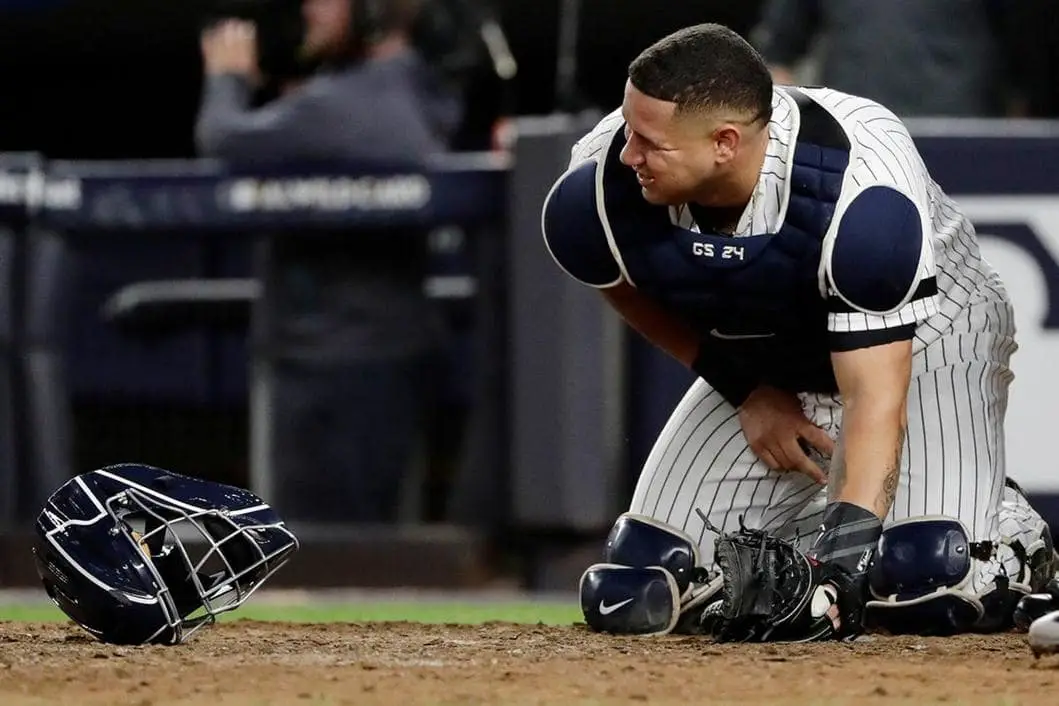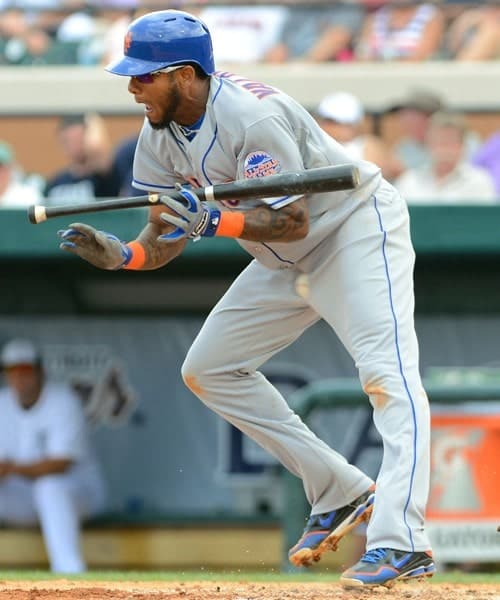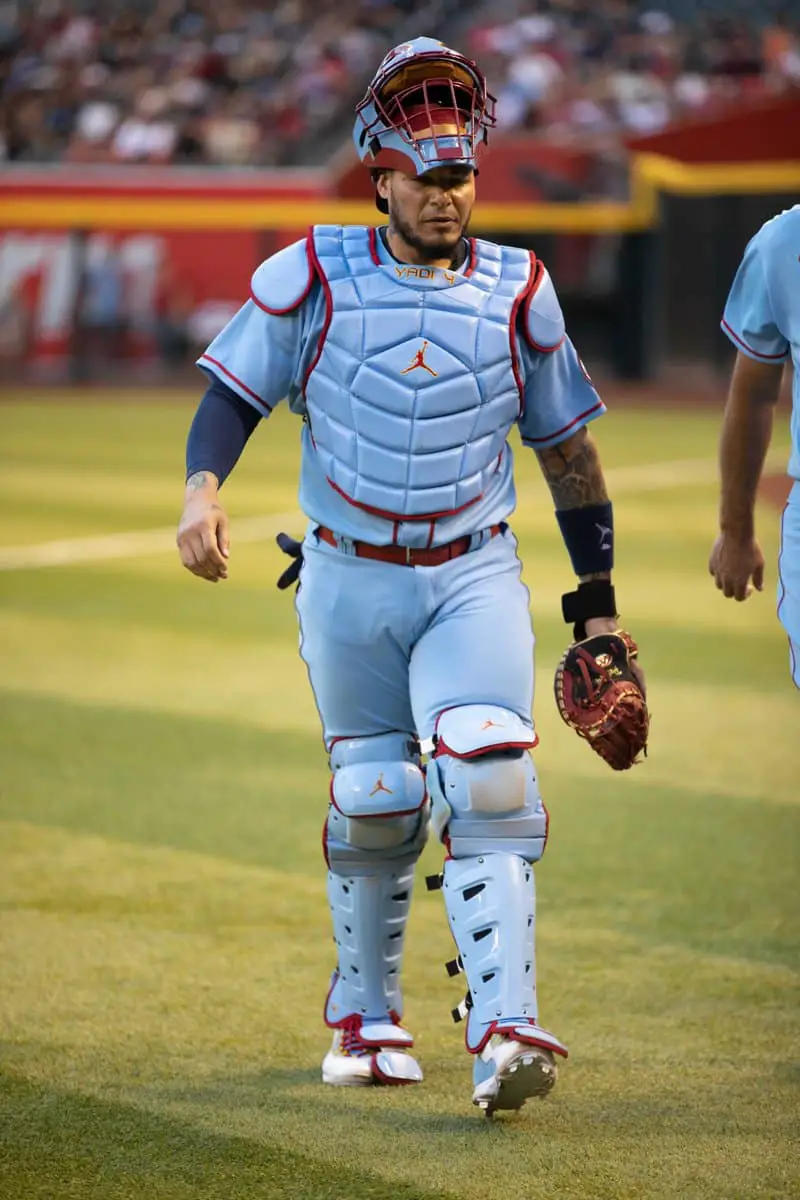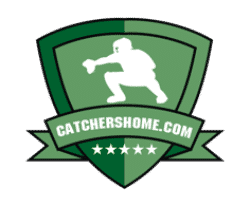Do Baseball Players Wear Cups?
We've heard multiple people ask, "do baseball players wear cups?"
Here's the short answer: some do and some don't.
(Check out our detailed post showcasing the best cups for catchers.)
Rules about protective cups can vary by league. We'll tell you about the biggest, highest visibility league out there, Major League Baseball (MLB).
The MLB does not require its players to wear cups.

Accordingly, there is a lot of evidence out there that some pro ballplayers do not wear them.
For example, an article from back in 2009 found that, generally speaking, MLB catchers wore cups, most (but not all) infielders wore them, and most outfielders did not wear cups.
Examples of MLB Players Not Wearing a Cup
There have also been a number of high profile incidents of professional ballplayers getting hit between the legs, and it was painfully obvious they weren't wearing a cup.
A good example of this was Jordany Valdespin in 2013. The former New York Met was facing flamethrower Justin Verlander when he squared to bunt and instead took a fastball in the mid 90s to his groin. He wasn't wearing a cup.
His manager, Terry Collins, said after the game about Valdespin "you would think… you would be smart enough to wear a cup."
Another notable incident came in a 2009 game when future Hall of Famer Adrian Beltre took a hard ground ball between the legs. He had massive testicular swelling and bleeding after the game, and many feared it would end his season (ultimately, it did not).
Getting hit in the groin without wearing an athletic cup can mean taking an impact equivalent to up to 2,400 pounds of force, which can cause severe testicular injuries such as testicular contusions.
So, it's pretty clear that wearing a cup is the smart thing to do from a safety standpoint.

What Influences the Decision to Wear or Not Wear a Cup?
Still, for those MLB players that choose not to wear a cup, why have they made that decision?
Well, there are two main reasons: comfort and performance.
Some ballplayers that don't wear a cup choose to do so because they feel that cups are uncomfortable. That was the reason Adrian Beltre gave.
A few years after the incident in 2009, Beltre said about cups “I never liked [them]. Even when I first signed with the Dodgers... they tried to force me [to wear one], I couldn't do it. I can't. Its uncomfortable.”
And some pro players don't wear them because they feel they can't move as quickly, flexibly, or as nimbly as they otherwise could without a cup. Noted speedster Carl Crawford falls into this camp.
After getting nailed in the groin during a game against the Baltimore Orioles in 2010, Crawford said afterwards “I do too many moves to wear a cup. … I’m still not going to wear a cup.”
In the end, perhaps the wise thing for most ballplayers to do is to find a comfortable, flexible cup that won't negatively impact your play. That way you can strike a balance and get the best of both worlds - safety and high performance.
Let us be clear though. If you are playing behind the plate, you should be wearing a cup. The risk of injury is simply too high to play without one. Catchers need cups!
For a more detailed overview of specific cups we recommend, click here.
Frequently Asked Questions (FAQs)
Question: What are some of the most famous examples of testicular injuries to MLB players?
Answer: One of the most famous recent examples of a baseball player suffering a rough injury to his groin area was Cardinals catcher Yadier Molina. In 2018, Yadi went on the DL after taking a 100+ mph deflected ball between his legs. He had to have emergency surgery to correct was was called a “traumatic hematoma” to his testicles.
In 2019, Seattle Mariners outfielder Mitch Haniger got hit in his groin with a fastball while at bat. The resulting injury was so severe that he missed half of the 2019 season and all of 2020 recovering, and he had to endure three separate surgeries during this time.
In 1997, Mariners pitcher Josias Manzanillo took a cupless line drive off the bat of Manny Rodriguez right to his groin. Somehow, he managed to pick up the ball and throw a runner out at the plate. Still, his injury was bad enough that it required reconstructive surgery.
In 2008, former Arizona Diamondbacks catcher Chris Snyder was hit in his groin by a deflected foul ball, making the news and leading to a DL stint for the catcher.
There are many more examples of testicular injuries to MLB players, with names like Caleb Joseph, Mike Parrott and Juan Uribe being a part of the unfortunate group of pro players to suffer similar types of injuries.

Question: At what age should baseball players start wearing cups?
Answer: It's never a bad idea to wear a cup when playing baseball, no matter your age.
Still, practically speaking, our recommendation on a certain age to start wearing a cup really depends on league and position.
For example, we believe all catchers should wear a cup, no matter their age or the league they play in.
For kids that play other positions, we suggest wearing a cup at least by the time they're out of t ball or coach pitch and are facing regular pitching from other kids.
Remember, testicular injuries are a real thing and they're incredibly painful. Take injury prevention seriously, and consider investing in a high quality cup.
Thank You for Reading
Hopefully you found this post to be a helpful and interesting read. If you want to get in touch with us, please head over to the Contact Us page or send me an email to scott (at) catchersome (dot) com.
Thanks for stopping by Catchers Home!
Scott Perry
Scott Perry is the owner and lead author at Catchers Home. He's a former baseball player, a current coach, a husband and a Dad. He remains as passionate about baseball today as he was as a kid.

